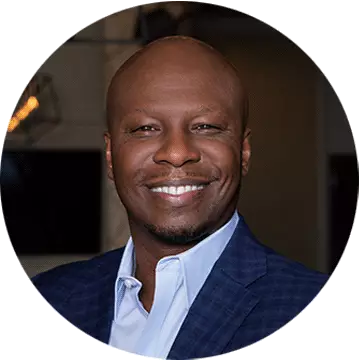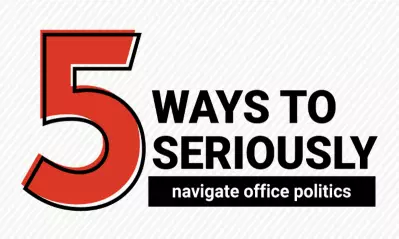How to dress like an exec

Written by By Dr. Patrick C. Horton

One unspoken truth about being an executive is that your dress code matters. Once you reach the executive level, your presentation is paramount to your image in the organization.
Having said that, I want to make clear that this is my opinion based on seven years of experience working as an executive. My industry blends both tech and business, so I very much work within corporate America. But as most people know, corporate America is a global experience these days, so my perception is influenced not just by American standards but international ones as well. (I’ve talking about the Middle East, Europe and Latin America, for example.)
I also recognize that standards are impacted by remote work and vary by industry. An art director at a magazine won’t necessarily dress the same way as the CFO of a business. A work-from-home day can be more relaxed than an in-person meeting. So, feel free to take the following advice and tailor it to your situation. When you reach the executive level in your career, you will have a better sense of your industry and office and can navigate the dress code accordingly. In the meantime, it’s important to dress for the job you want.
The Daily Uniform
Since executives bear the responsibility of running an organization, their attire should reflect both power and competence. Some ways to achieve this in your wardrobe are:
- Keep it simple and tasteful: Focus on fit over trend and embrace a neutral color palette. Yes, it’s fine to add a pop of color (in your tie or handbag, for example), but keep it to a minimum. You want the focus to be on your work, not your wardrobe.
- Opt for quality over quantity: You’d be surprised how you can take a few mix-and-match items of high quality and create multiple office-appropriate outfits.
- Accessorize intentionally: Nothing says executive like a quality timepiece or elegant jewelry. Whatever you go with, bear in mind the idea is to complement your outfit, not overpower it.
I tend to favor well-tailored suits in gray, navy, black and beige. I always wear a pressed dress shirt directly from the cleaners and make sure my shoes are polished. (And yes, I like a nice watch.)
But I wasn’t always this way. In 2012, I was the Afghanistan country manager for Free Internet Café, a Department of Defense-sponsored program that provided free internet and phone services to the troops at military bases in Afghanistan. I was in charge of 50 people and routinely met with high-ranking military officials and government civilian employees.
One day, my boss set up a meeting that had the potential to result in millions of dollars being transferred to my program. Now, when you work overseas in a combat zone, you typically dress down in jeans or cargo pants and a simple polo shirt. (Not to mention it’s tough to acquire a large wardrobe when your only retail access is the local military exchange store.) Anyway, on the day of the meeting, I simply pulled the first polo shirt I could find out of my closet and didn’t think twice about the professional setting I was entering.
After getting dressed, I walked outside to meet the government program executive. He stared directly at my shirt, which had a logo on the right breast pocket for a certain hip-hop clothing brand.
When I noticed him noticing my shirt, I was mortified. This is no diss to hip-hop, but there is a time and a place to wear that kind of attire, and a meeting with a potential multimillion-dollar customer isn’t it. The program exec gave me a look of disgust, as he should have, but never directly commented on my shirt. This was likely because he didn’t want to embarrass me or cross any cultural lines. (I’m African American, and he was Hispanic.)
The meeting went forward and we nailed it. We ended up securing roughly $10M in additional funding for our program. But what if that military colonel took one look at me and said, “I’m not giving $10M to a country manager who isn’t smart enough to dress up for this corporate meeting”?
It reminds me of a phrase I heard as kid: If you look good, you will feel good; and if you feel good, you will do good.”
I vowed never to put myself in that position again. I knew at that time in my life that if I wanted to be taken seriously and promoted to an executive role, I had to start dressing the part.
As my late, great Uncle Willie used to tell me, “If you wash your car, it runs better.” People are the same way when it comes to their attire. You perform better when you dress the part.
Your wardrobe is an investment
Think of your wardrobe as an investment. You should take time to select high-quality pieces that are versatile in terms of styling and matching. And while the old saying “Sometimes you have to spend money to make money,” can apply, you can actually create an executive-level wardrobe on nearly any budget.
The trick to doing this on a shoestring is tailoring. This is something I feel people often forget about: the importance of having clothes that fit your body.
This isn’t always possible with ready-to-wear clothes. So, find yourself a good tailor and have your clothes cinched, let out, lengthened or shortened as your body dimensions require. This is critical to the image of success you want to portray as a business person. Nothing says this better than high-quality, tailored clothing.
Dress at your level … but with an eye toward advancement
Another secret is that, as an executive, you should aim to dress at a level above your staff. If the office dress code is business casual then, as an executive, you should dress slightly more formal. This establishes a subconscious boundary between your employees and yourself that underscores the organizational chain of command.
While you should dress a level above your staff, you should also dress at the same level as your executive peers. You don’t want to come off as trying to outdo your peers thus creating unnecessary competition or offense.
In the end, career success isn’t always just about the work you do. It’s the image you portray as well. I’m sure we all know this on some level. We’ve all had the experience of being treated one way when dressed sloppily and another when dressed sharply. If you want to be an executive, it’s important you consider all these factors and make the best decision regarding attire so that you represent not just who you are today, but where you want to go in the future. Dress for the job you want!
ABOUT THE AUTHOR
Patrick C. Horton, MBA, DM/IST, is the vice president of program management for Tampa Microwave, a college professor and a veteran U.S. Army sergeant. He earned his Bachelor of Science in Information Technology, his Master of Business Administration and his Doctor of Management with a specialization in Information Systems at University of Phoenix. Dr. Horton launched his business, Professional Career Transformations, in 2021 as a way to guide and encourage others to identify and pursue their career goals. He is a member of Vistage Executive Coaching Group and a recipient of the Purple Heart in Operation Iraqi Freedom, and he lives in sunny Florida. Learn more about Dr. Horton and his commitment to helping others achieve their highest level of success by visiting his website and be sure to check out his YouTube channel for tips and advice on strategic career building.
Read more articles like this:


